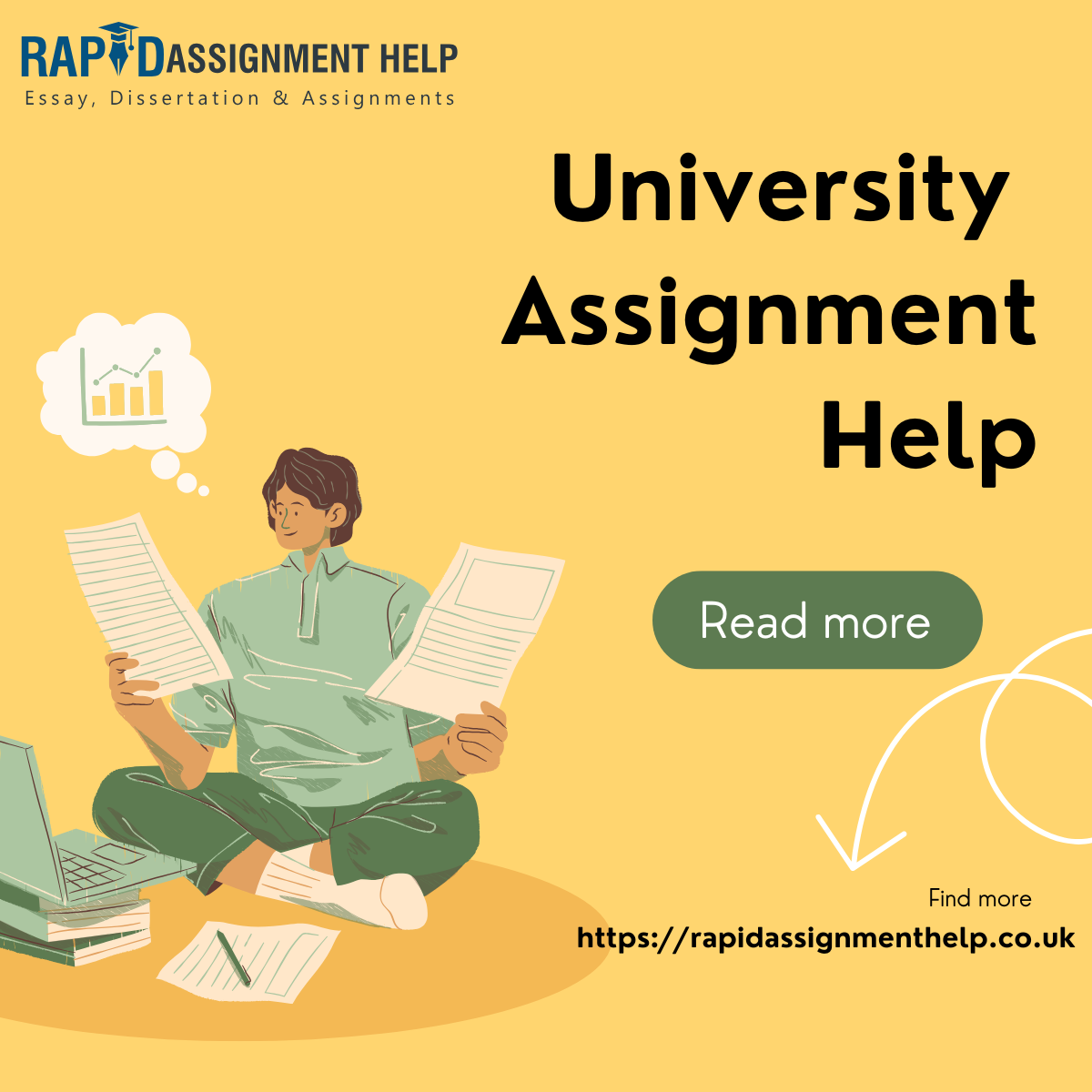Introduction: A New Age in Learning
Artificial Intelligence (AI) is no longer a distant innovation—it's now part of everyday university life. Students and professors alike are using AI-powered platforms for everything from research automation to personalized study guides. These tools are enhancing academic performance, streamlining workload, and opening access to previously unimaginable levels of educational customization.
From Grammarly offering grammar corrections in real time, to ChatGPT powering AI writing assistants, the classroom has evolved into a data-driven, feedback-enhanced ecosystem. AI isn’t replacing education; it’s making it smarter, faster, and more responsive to individual needs.
In this era of tech-assisted education, the relevance and demand for targeted academic support have also seen a shift. Many students now supplement their digital study efforts by turning to services like a University Assignment Writing Service to balance intense workloads with performance goals.
How AI Is Personalizing Learning
One of AI’s most significant contributions is adaptive learning. AI-driven platforms such as Coursera, Khan Academy, and Edmodo use machine learning algorithms to evaluate a student’s knowledge gaps, engagement level, and pace of comprehension. They then customize the learning path accordingly.
For instance, if a student struggles with linear algebra, the AI will automatically slow down the pace, offer more quizzes, or suggest foundational resources before progressing. This ensures mastery before moving on, enhancing confidence and competence alike.
Moreover, these platforms adjust based on behavior. If a student studies better at night, the app might schedule reminders or offer tests at peak cognitive hours. This kind of personalization would be impossible in a traditional classroom setting without AI’s analytical capabilities.
This tailored approach is especially valuable in massive online courses (MOOCs), where instructors cannot possibly give individualized attention to every learner. AI bridges that gap.
AI Writing Tools and Academic Integrity
AI writing tools have become integral for students looking to improve their academic writing. Tools like QuillBot, ChatGPT, and Wordtune are used to:
- Paraphrase complex ideas
- Summarize lengthy texts
- Check for grammatical consistency
- Optimize tone and style
While some faculty members express concerns over plagiarism or misuse, most universities are leaning toward regulation rather than restriction. Responsible usage guidelines are being developed that treat AI tools like calculators—useful aids, but not replacements for thinking.
As a result, students must now navigate an academic environment where they are expected to demonstrate discernment—leveraging AI to enhance, not substitute, their efforts.
AI Tutors and Academic Chatbots
Virtual tutors have stepped into the spotlight as a practical AI application in education. These intelligent bots are available 24/7 to answer questions, walk students through assignments, or provide explanations for tough topics.
Platforms such as Squirrel AI and Carnegie Learning offer AI tutors that:
- Provide real-time feedback on practice questions
- Suggest topic reviews based on errors
- Adjust lesson difficulty automatically
These AI tutors are especially helpful for students who study during odd hours or come from non-traditional academic backgrounds. They allow students to learn at their own pace, without judgment or time constraints.
Furthermore, academic institutions have begun integrating AI chatbots into their websites and learning management systems. These bots help with:
- Course selection guidance
- Exam schedules
- Assignment deadlines
- Resource navigation
The result? Reduced faculty burden and empowered students.
How AI Enhances Research and Literature Review
Academic research is one of the most time-intensive aspects of higher education. AI tools now assist students by automating parts of the research process:
- Semantic search engines like Iris.ai understand the intent behind queries and return more relevant academic papers.
- Literature review generators organize and summarize findings from multiple studies.
- Reference managers powered by AI (e.g., SciSpace, Zotero) can automatically generate and format citations.
Natural Language Processing (NLP) also plays a critical role. NLP tools extract key insights from papers and generate concise summaries, helping students consume large volumes of information quickly.
Even coding for research has been enhanced. AI pair programmers like GitHub Copilot suggest lines of code, flag potential errors, and streamline software development for research projects.
By taking the grunt work out of research, AI frees students to focus on analysis, critical thinking, and synthesis—skills that are core to academic growth.
Time Management and Smart Scheduling
Student life is a juggling act. Between lectures, assignments, part-time jobs, and social commitments, time often becomes a scarce resource. AI-powered productivity tools are helping students manage their schedules more effectively.
Apps like Notion, Todoist with AI plugins, and Clockwise use AI to:
- Auto-prioritize tasks based on deadlines and workload
- Suggest optimal time blocks for deep work or study
- Sync calendars intelligently to avoid conflicts
- Provide analytics on productivity trends
By monitoring digital behavior and study habits, these tools provide real-time nudges and suggestions to enhance focus. Some even track attention span, advising when to take breaks for improved retention.
Addressing Diverse Learning Needs with AI
Another massive benefit of AI in education is inclusivity. Students with learning differences such as ADHD, dyslexia, or auditory impairments benefit significantly from AI-enhanced support tools.
- Speech-to-text converters help those with writing challenges.
- Text-to-speech readers aid visually impaired or dyslexic learners.
- Real-time captioning through AI supports deaf students during lectures.
- Distraction blockers customized with AI enhance focus for those with attention issues.
For international students, translation tools and language simplifiers make course materials more accessible. AI tools that rephrase complex academic language or translate technical content in real-time ensure a level playing field.
By bridging these accessibility gaps, AI promotes educational equity and inclusion.
Faculty Involvement and AI Integration in Curriculum
Professors and academic staff are also leveraging AI to enhance teaching. From automating grading to analyzing student performance trends, educators now have access to tools that reduce repetitive tasks and increase instructional quality.
For example:
- AI can flag students at risk based on participation, performance, and engagement data.
- Automated assessment systems like Gradescope reduce grading time while improving feedback clarity.
- Instructors use AI-generated insights to tailor lectures based on collective learning gaps.
Some courses now integrate AI literacy into their syllabus, training students to responsibly use these technologies for academic and professional growth.
With this evolution, educators are transitioning from content deliverers to learning facilitators, focusing on mentorship and higher-order skills development.
Ethical Considerations and Future Challenges
While AI offers vast benefits, it also raises ethical questions:
- Data privacy: Who owns the learning data?
- Bias: Are AI algorithms equitable across demographics?
- Over-reliance: Will students lose the ability to think critically?
Universities are beginning to set boundaries and develop ethical frameworks. AI use policies now accompany honor codes. Data anonymization is being prioritized. And AI literacy is taught alongside usage to ensure students understand both capabilities and limits.
The future challenge is not to stop AI, but to use it responsibly—maximizing benefits while mitigating risks.
Conclusion: AI as a Learning Ally, Not a Shortcut
The integration of Artificial Intelligence into university education is not a passing trend—it’s a foundational shift. Students are embracing AI as a tool to personalize their learning, streamline assignments, and manage their time more effectively.
Support services, including platforms like a University Assignment Writing Service, continue to complement these technologies—offering tailored academic guidance when AI alone isn’t enough.
As institutions evolve to accommodate these changes, the focus must remain on balance: empowering students with tools while preserving the core values of education—curiosity, critical thinking, and ethical scholarship.
AI isn’t here to replace students or teachers. It’s here to elevate both.






Comments